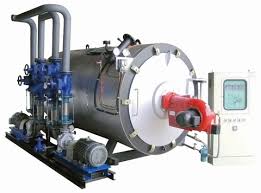
Nov . 06, 2024 13:38 Back to list
steam boiler system design
Designing an Efficient Steam Boiler System
The design of a steam boiler system is critical for industries that rely on steam for heating, power generation, and various manufacturing processes
. A well-designed steam boiler system offers efficiency, reliability, and safety, ensuring optimal performance while minimizing operational costs.Firstly, understanding the types of steam boilers is essential. Common types include fire-tube and water-tube boilers. Fire-tube boilers are generally simpler in design, where hot gases pass through tubes immersed in water. They are typically used for lower pressure applications. In contrast, water-tube boilers circulate water through tubes heated by hot gases, enabling them to handle higher pressures and temperatures. Selecting the appropriate type depends on the specific requirements of the operation, such as pressure needs, steam output, and application.
Efficiency is paramount in the design of a steam boiler system. Various factors influence boiler efficiency, including the type of fuel used, combustion process, and heat recovery systems. Using high-efficiency burners and incorporating technologies like condensing economizers can significantly enhance efficiency. These components recover waste heat from flue gases and transfer it back to the feedwater, thereby reducing energy consumption.
Moreover, proper sizing of the boiler is crucial. An oversized boiler can lead to inefficiencies due to frequent cycling, while an undersized boiler may struggle to meet demand. Conducting a thorough analysis of the steam load requirements, including peak demand and fluctuations in usage, is essential to ensure the boiler system is appropriately sized.
steam boiler system design

Another important aspect of steam boiler system design is safety. Boilers operate under high pressure and temperature, necessitating stringent safety measures. Incorporating safety valves, water level controls, and comprehensive monitoring systems are crucial to prevent accidents. Regular maintenance and adherence to local regulations and standards also play a vital role in ensuring the safe operation of the system.
Additionally, water treatment is a key component of steam boiler operation. Poor water quality can lead to scale buildup and corrosion, severely impacting efficiency and longevity. Implementing a robust water treatment program, which may include softening, chemical treatment, and regular testing, helps maintain the integrity of the boiler system.
Lastly, integrating automation and control systems enhances the operational efficiency of steam boiler systems. Modern control technologies enable precise monitoring and adjustment of parameters such as pressure, temperature, and water levels, ensuring consistent steam quality and reducing manual intervention.
In conclusion, the design of a steam boiler system is a complex but essential task for industries reliant on steam. Focusing on efficiency, proper sizing, safety, water treatment, and automation can lead to a reliable and cost-effective operation. By investing time and resources into thoughtful design, industries can optimize their steam boiler systems, leading to improved performance and reduced operational costs.
-
High-Efficiency Commercial Oil Fired Steam Boiler for Industry
NewsJul.30,2025
-
High-Efficiency Biomass Fired Thermal Oil Boiler Solutions
NewsJul.30,2025
-
High Efficiency Gas Fired Thermal Oil Boiler for Industrial Heating
NewsJul.29,2025
-
High-Efficiency Gas Fired Hot Water Boiler for Sale – Reliable & Affordable
NewsJul.29,2025
-
High Efficiency Biomass Fired Hot Water Boiler for Industrial and Commercial Use
NewsJul.29,2025
-
High-Efficiency Biomass Fired Hot Water Boiler for Industrial Use
NewsJul.28,2025
Related PRODUCTS






















